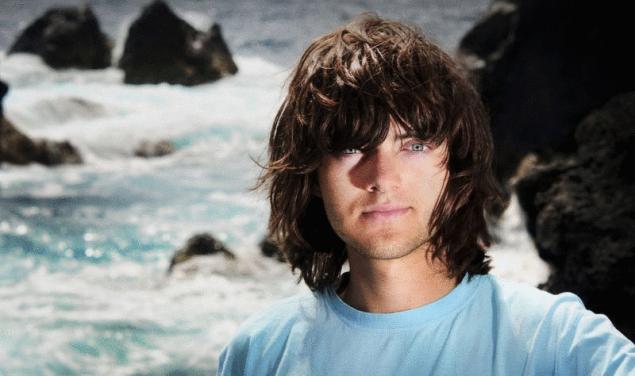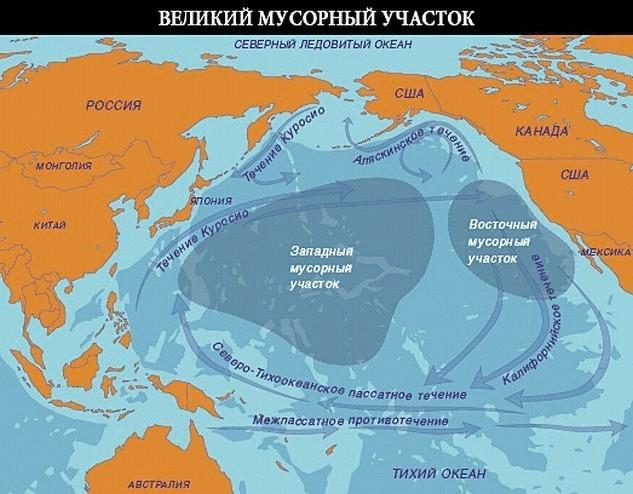Boyan Slat and his beautiful dream of a clean Planet
 Bashny.Net
Bashny.Net

Boyan Slat, a 20-year-old Dutchman, lives only one dream — to rid the oceans from the millions of tons of plastic waste that contaminates it. This idea first struck him at the age of 16 years, in the summer of 2011, when he dived off the coast of Greece. He noticed that she saw under water more plastic bags than fish. According to him, everything said, nothing you can do that with the plastic in the seas impossible to fight. When he first wondered if it was true.
Over the last 30-40 years in the water of the oceans came millions of tons of plastic. Currently the world produces 288 million tons of plastic per year, of which about 10% ends its way in the sea. Up to 80% of this plastic has a "land" birth. Most often it is household garbage, which through the Sewerage system comes first in rivers and then the sea. This plastic ends up in a complex system of ocean currents and is concentrated in five giant "motorbreath", the most famous of which is the huge Pacific garbage patch, located between Hawaii and California.

The concentration of plastic debris in these areas is very high — sometimes the water it resembles a plastic soup, the total area of such spots is huge, and in addition, they rotate slowly. These factors complicate the work to eliminate them.
"Many people think that the garbage gathered there in the form of Islands, which almost can walk," says Slat. — In fact, these spots occupy millions of square kilometers. If to send to clean the court with nets and trawls, it will take a Millennium. Not to mention the fact that it will entail huge costs, and could hurt fish."
The school of Slat've thought a lot about this issue and came to the conclusion that it is necessary to take advantage of existing ocean currents and force them to work for the good of mankind. He made it the topic of his school science project. His proposal describes a system of floating barriers, anchored that will catch the debris and direct it in the direction of the floating platforms with installations for the processing of plastic into fuel and other useful raw materials. This proposal won the special prize of the Technological Institute in Delft.
But Slat was not satisfied. Since childhood he wanted to become an engineer and particularly interested in missiles. After high school he enrolled at Delft University in the Department of aerospace engineering, but the thought of cleaning the world's oceans from plastic debris could not let him go. He created a special Fund — The Ocean Cleanup — and posted the presentation under the title "How the oceans can clean themselves". And six months after the start of classes at the University, he decided to interrupt its course and try to translate their ideas to life.
At that moment, all his savings was only about 200 euros, and it took him several months to find sponsors. According to him, nobody on his proposal and did not respond once, though, he sent out his call from 300 companies in a single day.
But then, something unexpected happened. March 26, 2013, a few months after the video of his presentation appeared on the Internet, the video suddenly began to spread with the speed of the virus and has attracted the attention of hundreds of thousands of people. The slat in the first day received a thousand offers of assistance. He created a separate page on its website to raise funds on the principle of "crowdfunding" and in 15 days received 80 thousand dollars.
The amount of plastic entering the marine ecosystem is so great that in the near future we will be faced with a situation where it amounted to a third of the biomass of all fish. According to the Environmental programme of the United Nations, one square kilometer of sea area accounts for an average of 13 thousand floating fragments of plastic. The problem is that they are ground sea currents in the millions of smaller fragments. Many of them end up in the digestive system of marine animals, with unpredictable consequences. Particularly affected by this Albatross, feeding on flying fish eggs that are attached to any floating objects — often fragments of plastic.
Dr. Jan Andries van Franeker from the Institute for marine resources and ecosystems in the Netherlands keeps in his office a collection of garbage from such garbage ocean concentrations, there are toothbrushes, lit, floats, Golf balls, applicators for women's tampons — they are all found in the remains of Chicks of albatrosses.
Sea turtles also die after becoming entangled in plastic bags, mistaking them for jellyfish, which they eat. When the turtle begins to chew the packet, she is unable to stop due to waste millions of years of evolution to the special design of the throat, which does not give a slippery jellyfish to get out.
However the number of plastic fragments that van Franeker detects in seabirds was reduced by half in comparison with 80-mi years of the last century. Probably, steel producers are throwing away less plastic than before, as it is unprofitable to waste too much raw material. But consumers behave differently — as he says, plastic trash easier to throw away than to recycle.
However, the proposal to Send, spread across the world wide web, was criticized by many experts. They note that a much more rational solution to the problem of plastic waste would not be eliminating it in the sea, and preventing the spread of plastic in rivers and canals.
In response, the Slat has begun the first stage of learning the ways of realization of your project. He has gained about hundreds of volunteers in many countries, among which there are serious scientists and engineers, and students.
The Slat went with the expedition to the North Atlantic trash is the spot where he proposes to establish the first platform. "The first three days I suffered badly from seasickness," he says. — Constantly blowing strong wind, and waves reached three meters."
In June of this year, a month before his 20th birthday, Slat has published a 530-page report about your project. The back cover of this booklet was made from recycled plastic waste. The document, in the drafting of which was attended by 70 engineers and scientists, contains information about computer models of floating barriers. He answered many of the criticisms that was voiced earlier. This was followed by a new campaign on crowdfunding, which has already brought in $ 2 million. That was enough to Fund major pilot project in the coming year. Slat hopes that by 2020, the platform in the North Atlantic will become a reality.
However, critical voices in his address continue to be heard. For example, Dr van Franeker considered that draft Send will not solve the problem with the marine birds that feed on the eggs attached to floating pieces of plastic.
Other scientists point out that the proposed Slalom device will filter out from sea water, pieces of plastic over 2 mm in diameter, while smaller fragments will remain in the water and will harm further.
Currently in the world there are commercial companies that create the equipment to intercept the plastic debris in rivers and channels. In the Netherlands passes the test device the Plastic Visser ("plastic Fisher"), and in the Bay the American city of Baltimore already has a barrier on solar and tidal energy Trash Wheel.
While the Slat remains in the Netherlands as in this country there are a lot of marine engineers and specialized companies, which may be in the implementation of his project. Slat believes that the Dutch used to refer to the sea in my own way and believe that all problems have a technical solution. The slat continues to work hard on his project, although his classmates sometimes tease him, talking about his exciting student life. His working day often lasts 15 hours, and Slan is not going to relent. "If you want something to achieve in life, start as early as possible," he says.
Source: nashaplaneta.su
Source: /users/4
Tags
See also
5 artists, singing the praises of the rhythm of the big city
Low Cortisol when no stress, there is no ....
Bodily awareness
Light painting Henrettsa Willem (Willem Haenraets)
Original ways to get rich
Original ways to get rich (10 photos)
Top 10 most expensive jewelry in the world
Alexander mimran: Psychosis aging can be cured
6 natural ways to bring the accumulated fluoride from the body

















